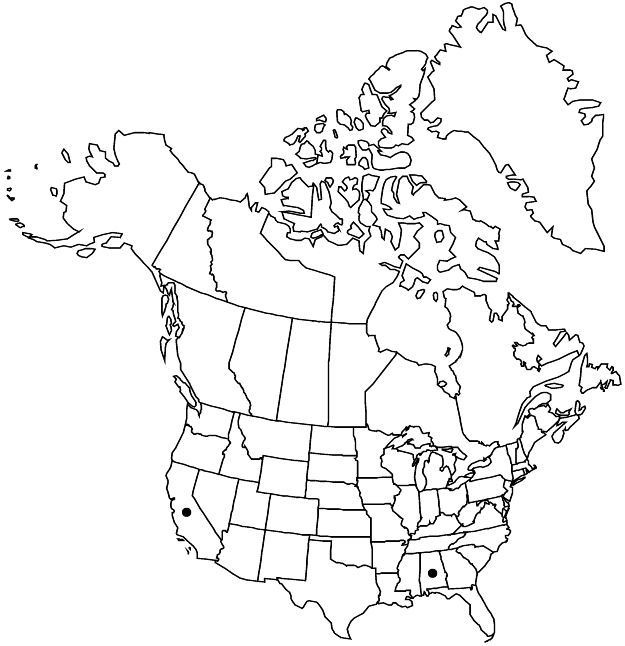Difference between revisions of "Malva nicaeensis"
Fl. Pedem. 2: 40. 1785.
FNA>Volume Importer |
imported>Volume Importer |
||
| (One intermediate revision by the same user not shown) | |||
| Line 31: | Line 31: | ||
|elevation=0–400(–1200) m | |elevation=0–400(–1200) m | ||
|distribution=Ala.;Calif.;s Europe;w Asia;n Africa;introduced also in Mexico;South America (Argentina;Chile);Atlantic Islands (Macaronesia);Pacific Islands (New Zealand);Australia. | |distribution=Ala.;Calif.;s Europe;w Asia;n Africa;introduced also in Mexico;South America (Argentina;Chile);Atlantic Islands (Macaronesia);Pacific Islands (New Zealand);Australia. | ||
| + | |introduced=true | ||
|discussion=<p><i>Malva nicaeensis</i> has been collected as a waif in Massachusetts and New Jersey and has been reported in British Columbia and Montana; vouchers have not been found. One vouchered collection has been reported from Mobile County, Alabama. In the flora area, it is found most commonly in the Mediterranean climate of California. It may not be established elsewhere within our range. In some older treatments it was identified as or included within <i>M. rotundifolia</i>, a name rejected because of its inconsistent use for this as well as for <i>M. pusilla</i> and other species. It is similar to <i>M. sylvestris</i>, except for its decumbent habit and smaller flowers.</p> | |discussion=<p><i>Malva nicaeensis</i> has been collected as a waif in Massachusetts and New Jersey and has been reported in British Columbia and Montana; vouchers have not been found. One vouchered collection has been reported from Mobile County, Alabama. In the flora area, it is found most commonly in the Mediterranean climate of California. It may not be established elsewhere within our range. In some older treatments it was identified as or included within <i>M. rotundifolia</i>, a name rejected because of its inconsistent use for this as well as for <i>M. pusilla</i> and other species. It is similar to <i>M. sylvestris</i>, except for its decumbent habit and smaller flowers.</p> | ||
|tables= | |tables= | ||
| Line 55: | Line 56: | ||
|publication year=1785 | |publication year=1785 | ||
|special status=Introduced;Weedy | |special status=Introduced;Weedy | ||
| − | |source xml=https:// | + | |source xml=https://bitbucket.org/aafc-mbb/fna-data-curation/src/2e0870ddd59836b60bcf96646a41e87ea5a5943a/coarse_grained_fna_xml/V6/V6_528.xml |
|subfamily=Malvaceae subfam. Malvoideae | |subfamily=Malvaceae subfam. Malvoideae | ||
|genus=Malva | |genus=Malva | ||
Latest revision as of 22:21, 5 November 2020
Herbs, annual or biennial, 0.2–0.6 m, sparsely to densely hairy, hairs both simple and stellate. Stems procumbent or trailing to ascending, villous-hirsute. Leaves: stipules persistent, ovate to broadly ovate, 4–6 × 3–5 mm; petiole 2–5 times as long as blade; blade semicircular or reniform, 2–4 × 2–4 cm, sometimes to 12 cm in young plants, base cordate to nearly truncate, distalmost leaves sometimes wide-cuneate, margins crenate or dentate, undulate, or with 5–7 shallow, lobes, apex obtuse, rounded, or acute, surfaces sparsely hairy, hairs simple. Inflorescences stellate; petals pink to lavender, drying bluish, usually with darker veins, 5–15 mm, subequal to or length slightly less than 2 times calyx, glabrous or nearly so; staminal column 2–2.5(–3) mm, densely, retrorsely puberulent, hairs simple; style 7–10-branched; stigmas 7–10. Schizocarps 6–7 mm diam.; mericarps 7–10, 3 mm, thick, as wide as long, margins sharp-angled but not winged, conspicuously, deeply reticulate-pitted apically, surfaces densely hirsute or glabrous. Seeds dark brown, 2–2.5 mm. 2n = 42.
Phenology: Flowering year-round.
Habitat: Disturbed sites
Elevation: 0–400(–1200) m
Distribution

Introduced; Ala., Calif., s Europe, w Asia, n Africa, introduced also in Mexico, South America (Argentina, Chile), Atlantic Islands (Macaronesia), Pacific Islands (New Zealand), Australia.
Discussion
Malva nicaeensis has been collected as a waif in Massachusetts and New Jersey and has been reported in British Columbia and Montana; vouchers have not been found. One vouchered collection has been reported from Mobile County, Alabama. In the flora area, it is found most commonly in the Mediterranean climate of California. It may not be established elsewhere within our range. In some older treatments it was identified as or included within M. rotundifolia, a name rejected because of its inconsistent use for this as well as for M. pusilla and other species. It is similar to M. sylvestris, except for its decumbent habit and smaller flowers.
Selected References
None.